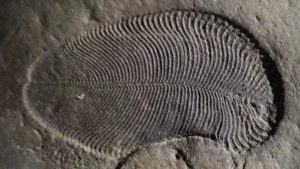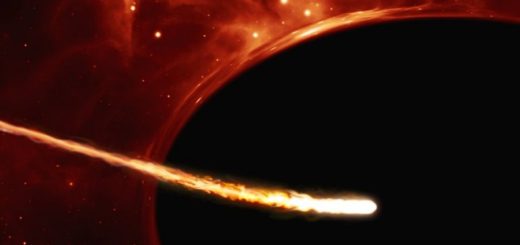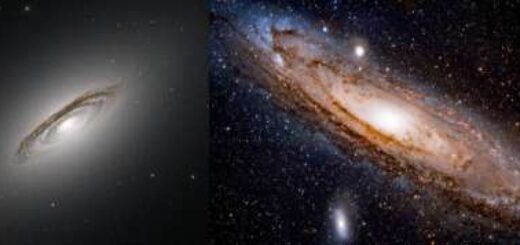World’s Oldest Animal Discovered May Be The ‘Holy Grail’ Of Paleontology
чThe world’s oldest animal is unlike anything we’ve seen before. This weird-looking creature can be the Holy Grail of paleontology.
Scientists from the Australian National University have discovered molecules of fat in an ancient fossil to reveal the earliest confirmed animal in the geological record that lived on Earth 558 million years ago.
The strange creature called Dickinsonia, which grew up to 1.4 meters in length and was oval shaped with rib-like segments running along its body, was part of the Ediacara Biota that lived on Earth 20 million years prior to the ‘Cambrian explosion’ of modern animal life.

World’s Oldest Animal Discovered May Be The ‘Holy Grail’ Of Paleontology
Credit: The Australian National University (ANU)
The Dickinsonia fossil was discovered in a remote area near the White Sea in the northwest of Russia. It was so well-preserved that the tissue still contained molecules of cholesterol, a type of fat that is the hallmark of animal life.
Lead senior researcher Associate Professor Jochen Brocks, from the ANU Research School of Earth Sciences. said the ‘Cambrian explosion’ was when complex animals and other macroscopic organisms – such as molluscs, worms, arthropods and sponges – began to dominate the fossil record.
“The fossil fat molecules that we’ve found prove that animals were large and abundant 558 million years ago, millions of years earlier than previously thought,” Brocks said in a press statement.
“Scientists have been fighting for more than 75 years over what Dickinsonia and other bizarre fossils of the Ediacaran Biota were: giant single-celled amoeba, lichen, failed experiments of evolution or the earliest animals on Earth. The fossil fat now confirms Dickinsonia as the oldest known animal fossil, solving a decades-old mystery that has been the Holy Grail of paleontology.”
See also:
Spider With A Tail Found Preserved In Amber After 100 Million Years
Giant 400-Million-Year-Old Monster Worm Discovered In Museum
Unexpected Discovery: Fossils Of Lizard That Lived 75 Million Years Ago At Egg Mountain, Montana, North America
Ilya Bobrovskiy, a PhD student at Australian National University said the team developed a new approach to study Dickinsonia fossils, which hold the key between the old world dominated by bacteria and the world of large animals that emerged 540 million years ago during the ‘Cambrian explosion’.
“The problem that we had to overcome was finding Dickinsonia fossils that retained some organic matter,” Bobrovskiy said.
“Most rocks containing these fossils such as those from the Ediacara Hills in Australia have endured a lot of heat, a lot of pressure, and then they were weathered after that – these are the rocks that palaeontologists studied for many decades, which explained why they were stuck on the question of Dickinsonia’s true identity.”
World’s Oldest Animal Discovered May Be The ‘Holy Grail’ Of Paleontology
Palaeontologists normally study the structure of fossils, but Mr Bobrovskiy extracted and analysed molecules from inside the Dickinsonia fossil found in ancient rocks in Russia to make the breakthrough discovery.
“These fossils were located in the middle of cliffs of the White Sea that are 60 to 100 meters high. I had to hang over the edge of a cliff on ropes and dig out huge blocks of sandstone, throw them down, wash the sandstone and repeat this process until I found the fossils I was after,” Bobrovskiy said.
The study molecules from these ancient organisms was a gamechanger and scientists could hardly believe their eyes.
Before this discovery it wasn’t clear that Dickinsonia were animals—i.e., that they belonged to Animalia, the same biological kingdom as humans
“However alien they looked,” the authors write, the discovery of large Dickinsonia animals “reveals that the appearance of the Ediacara biota in the fossil record is not an independent experiment in large body size but indeed a prelude to the Cambrian explosion of animal life.”



 Creators of mankind
Creators of mankind Description of “Tall white aliens”
Description of “Tall white aliens” Where they came from?
Where they came from? About hostile civilizations
About hostile civilizations The war for the Earth
The war for the Earth “Tall white aliens” about eternal life
“Tall white aliens” about eternal life Video: “Nordic aliens”
Video: “Nordic aliens” Aliens
Aliens Alien encounters
Alien encounters The aliens base
The aliens base UFO
UFO Technology UFO
Technology UFO Underground civilization
Underground civilization Ancient alien artifacts
Ancient alien artifacts Military and UFO
Military and UFO Mysteries and hypotheses
Mysteries and hypotheses Scientific facts
Scientific facts


















